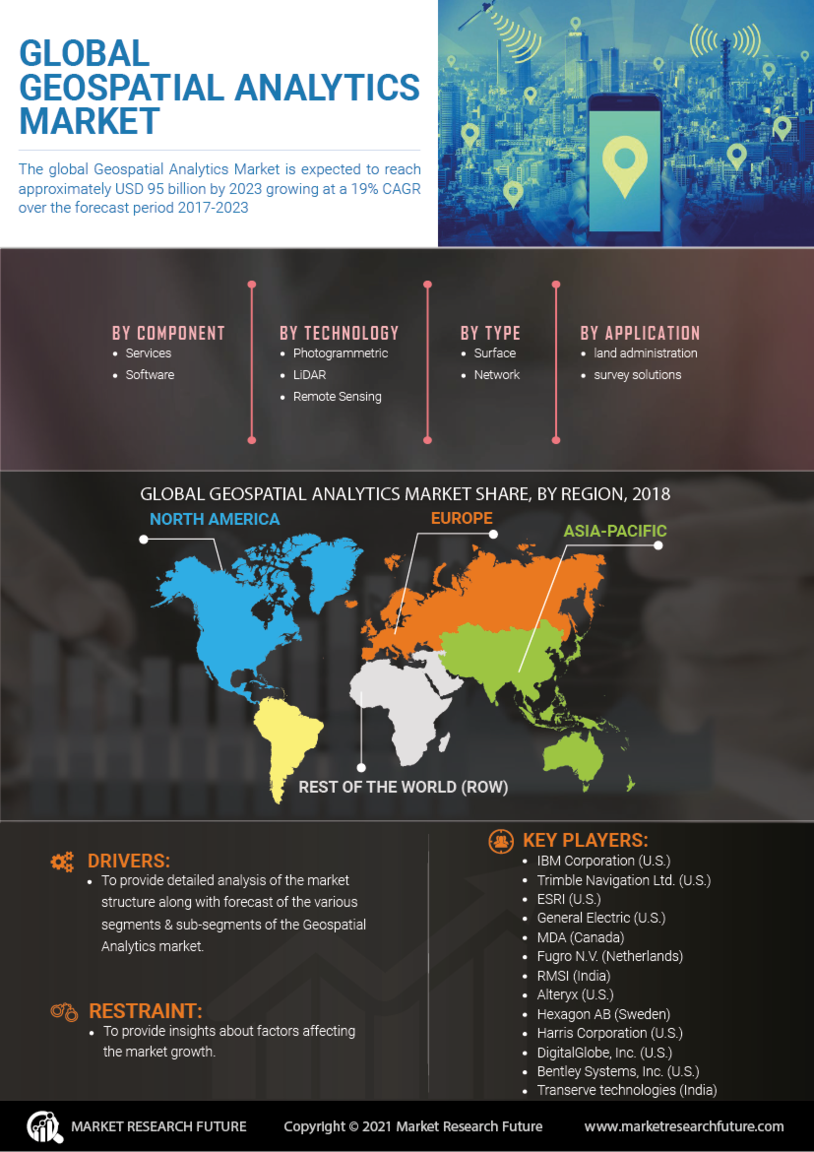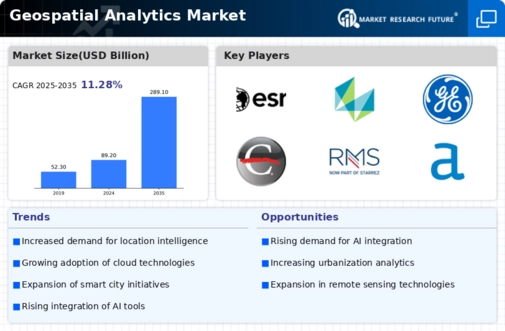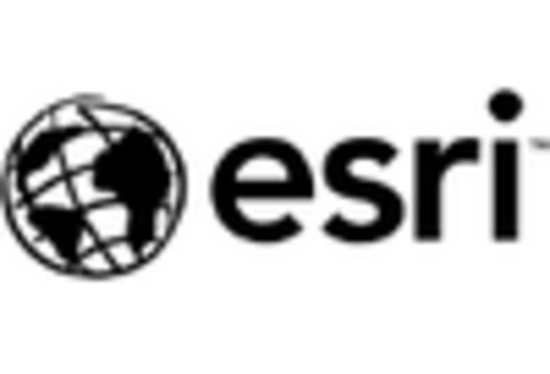Government Initiatives and Investments
Government initiatives aimed at improving infrastructure and urban planning are propelling the Geospatial Analytics Market. Various governments are investing in geospatial technologies to enhance public services, disaster management, and environmental monitoring. For instance, the implementation of smart city projects necessitates the integration of geospatial analytics for effective urban management. In 2023, government spending on geospatial technologies was estimated to exceed USD 30 billion, reflecting a commitment to leveraging data for societal benefits. These investments not only stimulate market growth but also encourage innovation within the Geospatial Analytics Market, as new applications and solutions emerge to meet governmental needs.
Rising Demand for Location-Based Services
The increasing reliance on location-based services is a primary driver for the Geospatial Analytics Market. Businesses across various sectors, including retail, transportation, and logistics, are leveraging geospatial data to enhance customer experiences and optimize operations. According to recent estimates, the market for location-based services is projected to reach USD 100 billion by 2026, indicating a robust growth trajectory. This demand is fueled by the proliferation of mobile devices and the Internet of Things (IoT), which generate vast amounts of geospatial data. As organizations seek to harness this data for strategic decision-making, the Geospatial Analytics Market is likely to experience significant expansion.
Advancements in Data Visualization Technologies
The evolution of data visualization technologies is significantly influencing the Geospatial Analytics Market. Enhanced visualization tools enable users to interpret complex geospatial data more intuitively, facilitating better decision-making. The integration of 3D mapping, augmented reality, and interactive dashboards allows stakeholders to visualize spatial relationships and trends effectively. As organizations increasingly recognize the value of data-driven insights, the demand for advanced visualization solutions is expected to rise. This trend is likely to contribute to the growth of the Geospatial Analytics Market, as businesses seek to adopt innovative tools that enhance their analytical capabilities.
Increased Focus on Environmental Sustainability
The growing emphasis on environmental sustainability is driving the Geospatial Analytics Market. Organizations are increasingly utilizing geospatial analytics to monitor environmental changes, assess natural resources, and implement sustainable practices. For example, geospatial data plays a crucial role in tracking deforestation, water resource management, and climate change impacts. The market for environmental geospatial analytics is projected to grow at a compound annual growth rate of 15% through 2025, reflecting heightened awareness and regulatory pressures. This focus on sustainability not only fosters innovation within the Geospatial Analytics Market but also aligns with global efforts to address pressing environmental challenges.
Integration of Geospatial Analytics in Healthcare
The integration of geospatial analytics in the healthcare sector is emerging as a vital driver for the Geospatial Analytics Market. Healthcare providers are increasingly utilizing geospatial data to improve patient outcomes, optimize resource allocation, and enhance public health initiatives. For instance, geospatial analytics can identify health trends, track disease outbreaks, and facilitate efficient emergency response. The healthcare analytics market, which includes geospatial components, is projected to reach USD 50 billion by 2025, indicating a growing recognition of the value of spatial data in healthcare decision-making. This trend is likely to propel the Geospatial Analytics Market as healthcare organizations seek to leverage data for improved service delivery.

















Leave a Comment